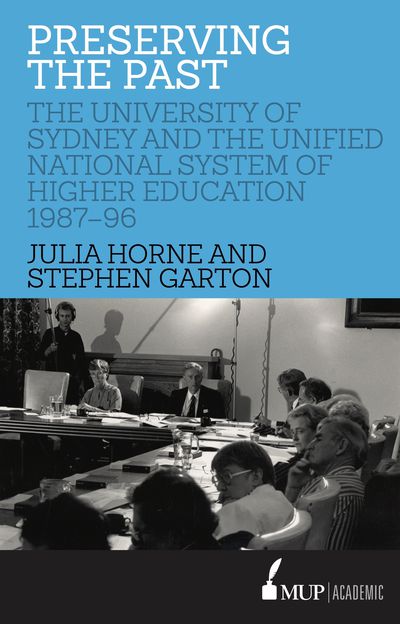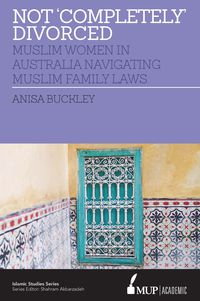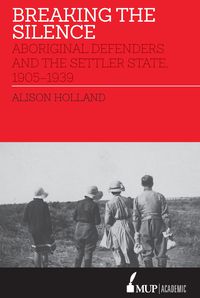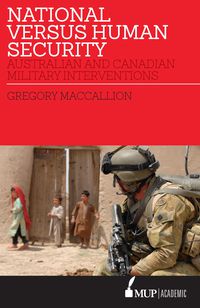←Back to Preserving the Past

An extract from “Preserving the Past”
The election of the Hawke Labor Government in 1983 soon signalled a shift in higher education policy. In 1984 John Manning Ward was invited by the Institute of Public Administration to give the R.N. Spann Memorial Oration and used the opportunity to reflect on the current challenges in Australian higher education. It was a classic jeremiad, canvassing the possibility of a ‘disastrous revolution’ in higher education that universities had a responsibility to avert. The sources of ‘disaster’, in Ward’s view, were twofold: the ‘increase in government intervention in academic matters’ and the ‘tremendous growth of academic responsibilities’, by which he meant the exponential rise in knowledge, technological innovation and the growing aspiration for tertiary education, placing pressure on governments and universities to expand. Ward feared that such political demands for relevance and short-term economic gain would damage the role of universities as the engine for the production and transmission of knowledge. This creeping utilitarianism, he argued, might subject universities to fruitless surveys and forms of bureaucratic accountability that wasted precious resources and diverted attention from the core activities of teaching and research. It would create an insidious uniformity in a system in which robust health depended on diversity. Government intervention, he believed, was predicated on the erroneous assumption that universities lacked engagement with the wider community — they were ‘ivory towers’. Ward disputed this assumption, pointing to the many ways in which universities were already involved with industry and the community. But his message was clear. If universities were to avoid the impending disaster of further government intervention, they must begin the process of reform: doing more with industry, raising more funds from the community, expanding enrolments to meet demand, becoming more fiscally responsible and, in a prescient comment, even amalgamating with other institutions. Universities should reform themselves to avert a ‘revolution’ imposed by governments. These were themes that subsequently echoed throughout his efforts to adapt to Dawkins’ blueprint for change.
Ward prided himself on his international outlook. He was by training an historian of British imperialism, particularly nineteenth-century colonial policy, and throughout his career spent considerable time in both Great Britain and North America. It was natural for him to keep an eye on what was happening in Great Britain, the United States, Canada and South Africa, and in doing so he sensed a shift in tone and emphasis in higher education thinking internationally that might also shape developments in Australia. In 1987 Ward informed the University Senate of the changing international environment that he believed would begin to shape public policy in Australia. He cited the recent British inquiry into tertiary education, conducted at the behest of British vice-chancellors and principals by Sir Alex Jarrett, former businessman and senior public servant and Chancellor of the University of Birmingham. The report was widely discussed in the Australian Vice-Chancellors’ Committee, having been introduced by Ward and Peter Karmel, the former head of the Australian Universities Commission, its successor, the Commonwealth Tertiary Education Committee (CTEC), and then Vice-Chancellor of the ANU. Ward noted a new emphasis on business and commercial language to justify higher education, ideas that he felt were influencing Australia’s Labor Government. For Ward, the signs of impending change were evident both at home and abroad.
More generally, there were signs of strain in the binary system of universities and colleges of advanced education (CAEs) well before Dawkins’ announced his reforms. The colleges were initially restricted to undergraduate teaching with a focus on vocational training, but had extended their offerings; although funded for teaching only, some had developed substantial research capacity. Moreover, there was considerable overlap in subjects that undermined claims for the distinctiveness of university education. Some State governments sought to increase the standing and status of colleges by legislating that they would become universities, and thereby qualify for a higher level of funding from the Commonwealth. In 1985 the Western Australian Labor Government of Brian Burke legislated to create a new university, Curtin University, out of the former Western Australian Institute of Technology, testing the Hawke Government, which refused to fund Curtin at the University level. Similarly, in 1987, Rodney Cavalier, the New South Wales Minister for Education in the Unsworth Government, announced that from 1988 the New South Wales Institute of Technology would become the University of Technology, Sydney (UTS). By early 1987, a number of influential higher education commentators were arguing that the binary system was redundant.
There were also persistent difficulties within the University of Sydney. By 1985, after a decade of declining Commonwealth funding, Australia’s oldest university was struggling. The financial difficulties confronting Sydney had been evident soon after Ward became vice-chancellor. Ward informed the University’s Academic Board that funding per student had fallen by 9 per cent since 1975. Sydney had been particularly affected. Two years into his term the University faced a deficit of over $3 million, more than was allowed under Federal Government regulatory requirements. Significant cuts were essential. Of equal concern was the impact on the University’s physical infrastructure. Commonwealth capital funding used to construct buildings, equip laboratories and develop teaching amenities had fallen much further than recurrent funding. Maintenance and refurbishment of essential buildings and facilities failed to keep pace with new requirements and the need to maintain ageing buildings. Despite growth in student and staff numbers, no major projects were initiated or completed between 1974 and 1993. Facilities in many parts of the campus were far from optimal: temporary buildings erected out of provisional building materials to cope with a sudden increase of student numbers in the immediate post-war period were still being used some forty years later, often patched up as requirements changed: by the 1980s many staff and students joked that some of these ‘transient buildings’ were in danger of having heritage orders placed on them (and the last was not demolished till 2015). In 1990 the incoming vice-chancellor Don McNicol described the physical fabric of the University as ‘horrendous’. The University’s budget was clearly under serious stress and strain.
Difficult decisions lay ahead for the University of Sydney. In addition to a general round of cost-cutting and downsizing, Ward also contended with more fundamental challenges facing Australian higher education. Recovering the University’s financial position required more than gently pruning costs. He detected a shift in government thinking away from sustaining a university system through taxation revenues alone. It was inevitable, he argued, that the University would have to increase student numbers while holding or reducing staff numbers, and also find other sources of revenue from industry, private support or by creating a new income stream by promoting education as an export commodity. Achieving this goal, however, required more fundamental reforms of university governance and the development of new mechanisms to drum up support from outside sources. Ward established a business liaison office and reformed the senior management committee structure to provide greater focus on activities such as financial planning, community engagement and infrastructure. Measures were proposed to create discipline reviews to optimise opportunities in both research and the economies of scale created by increased student numbers. More fundamentally, he stressed the vital importance of financial devolution to faculties to drive greater efficiencies and rewarded those disciplines that increased revenue and reduced expenditure.
Inevitably, internal pressures and tensions arose from this climate of stringency. Some academics, particularly in the Arts Faculty, were critics of Ward’s measures to address declining Commonwealth funding. They preferred outright opposition to government-imposed fiscal cuts and forthright demands for more public funding. Ward, ever the careful administrator, believed such grand symbolic gestures were fruitless. Sound and fury, he believed, would not improve the lot of staff and students or preserve excellence. Less astute were his attempts to defuse ‘radical disruption’.
The Faculty of Arts clearly concerned him. Although it was large and prestigious and Ward’s intellectual home, he nonetheless criticised it as being ‘at the mercy of majorities choosing to attend particular meetings’ and, he claimed, at times dominated by departments from other faculties. He floated the possibility of breaking the faculty into two, a Faculty of Arts and a new Faculty of Social Sciences, in part because he felt the faculty was too large and diverse to be managed under one administration and, possibly, also to divide the critics, although this was never an explicit intention. His plan for dividing the Arts Faculty failed, and the creation of a Faculty of Social Sciences was stillborn. In the end, only the Department of Education broke away from the Arts Faculty to form a new Faculty of Education. Science was also too large, but less troublesome. Science, however, rather than resisting Ward, sought to ease concerns about size by creating four distinct administrative divisions within the faculty to make the diversity of disciplines and departments more manageable. These divisions, each led by a head who reported directly to the dean, remained under the umbrella of one faculty, which might explain why it succeeded, unlike Ward’s abortive plan to split the Arts Faculty. But Ward’s problems remained. With hindsight, more faculties probably resulted in increased administrative costs since faculties create larger bureaucracies than departments, and the dissent within the Arts Faculty continued. Ward’s cautious and careful working of senior committees was inadequate to the rough and tumble of a noisy academic populace. He was not as comfortable as Sir Bruce Williams in front of a large audience or in the face of overt conflict, and his capacity to temper opposition less evident.
Ward did, however, lay some of the intellectual groundwork for current ideas such as strategic planning. Although Ward expressed aversion to modern trends, he adapted them where appropriate, utilising the quaint Latinate phrase ‘quinquennial planning’ commonly used in British government funding formulas. He proposed the idea of appointed rather than elected deans, which was not supported by all faculties, and so, rather than imposing the proposal universally, he implemented it as occasions arose. Change was incremental rather than revolutionary. By 1988 only four of the eleven deans were appointed through the new selection committee process chaired by the Vice-Chancellor, with the rest following the traditional process of election by faculty boards. A formal decree that appointments of deans would be advertised internally and externally and determined by a selection committee chaired by the Vice-Chancellor had to await his successor. Yet Ward’s moves to appoint deans, if slow, were part of a plan to build a larger senior management rather than rely on the traditional balance of power between elected deans and the Academic Board. The road ahead for the University was difficult, and fundamental changes to the way the University operated were essential if it was to sustain its place as one of the country’s leading institutions of higher education.
Despite the fiscal stringency of the early years of Ward’s term, the deficit was seemingly intractable. In September 1986 Ward took the unprecedented step of issuing a ‘Yellow Paper’ to explain to the University community the ongoing seriousness of the situation and the direction of travel that he and the Senate had set to right its course. As Ward explained, falling Commonwealth funding for universities was the root cause. Whichever way one took the evidence, he argued, the dismal funding picture was the same. Worse, in real terms capital expenditure for higher education, adjusted for inflation, was only a fifth of what it had been in 1975. More alarming was the belief that Sydney had fared worse than some of its counterparts, and that its level of funding per student had fallen more than the sector average. The bursar, Stephen Harrison, later informed Senate that by his calculations Sydney was the second-worst funded university in Australia. Whether this was because Sydney taught many of the more expensive disciplines or that the salary bill for Sydney was comparatively high is unclear. But the bursar’s alarm resonated. Ward cited a litany of factors that added to Sydney’s financial woes, such as rising insurance premiums, the mounting cost of government compliance regulations, the serious backlog in building repairs and maintenance, and a top-heavy staffing profile. The belt, he argued, had to be tightened.
A critical element of his plan was devolution of financial responsibility to faculties, a reform finally introduced in 1989 and which showed Ward was prepared to undertake fundamental reform when necessary. Previously all financial decisions had been made by the senior executive, with small discretionary budgets being allocated to deans. For Ward, reining in expenditure, giving pause to staffing decisions and a host of other matters involving expenditure would be achieved only if faculties managed their own resources and balanced their needs and desires against available funds. Nonetheless, it was going to take time for the University to work its way out of trouble. Although in 1986 Senate approved his proposal for a deficit budget for the next two years, it came on the condition that he save $1 million through a raft of processes that included a stay in appointments to some positions including professorial chairs, a cap on relatively costly promotions to reader and associate professor, as well as instituting early retirement schemes (two years before the Commonwealth created and funded similar retirement schemes for the sector), moving towards more flexible staffing arrangements (more fixed-term and casual positions), and a campaign to reduce workers’ compensation claims. Even despite cost-cutting, by 1989 the financial position had worsened. The University’s first ‘Quinquennial Plan’, approved in 1987 with the aim of introducing fiscal planning and coordination in the development of the University and ‘preserve greater control over our own affairs’, was already out of date. Events had overtaken even the most careful planning.




